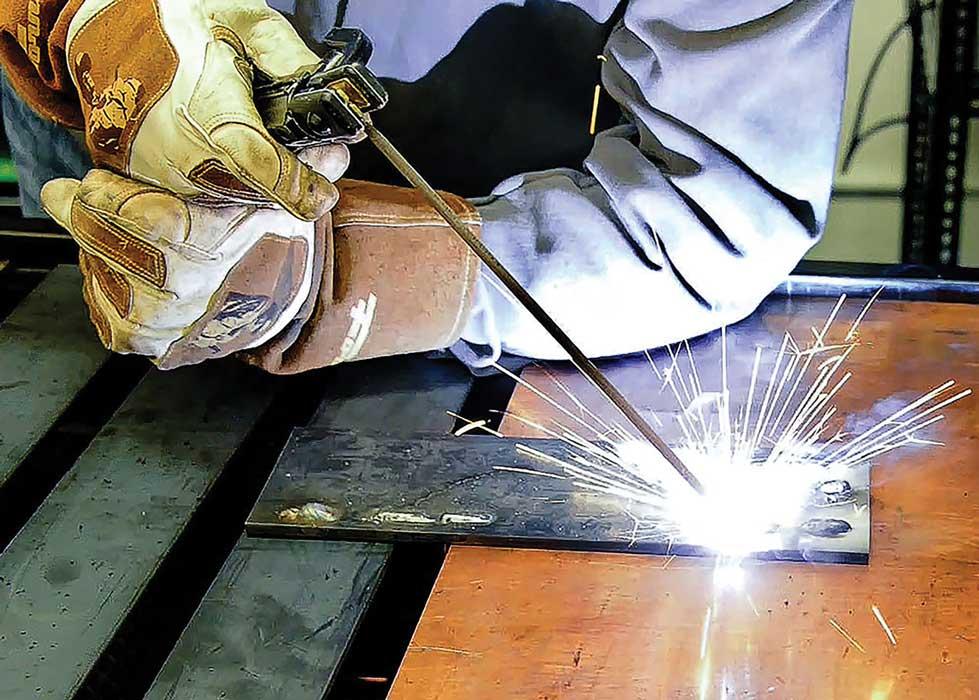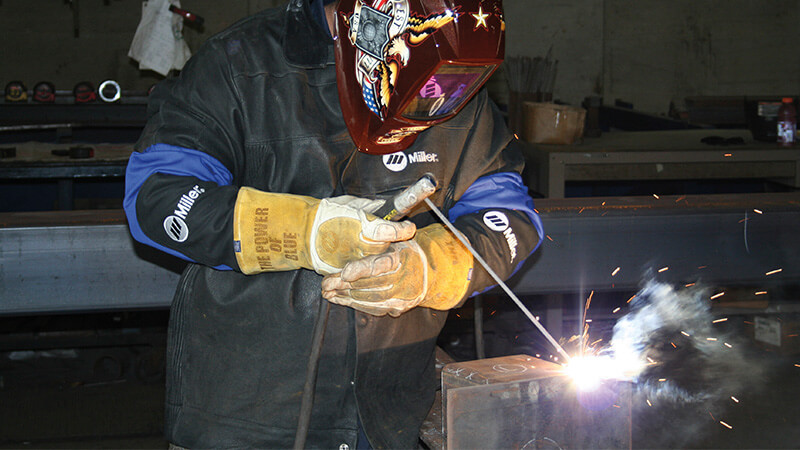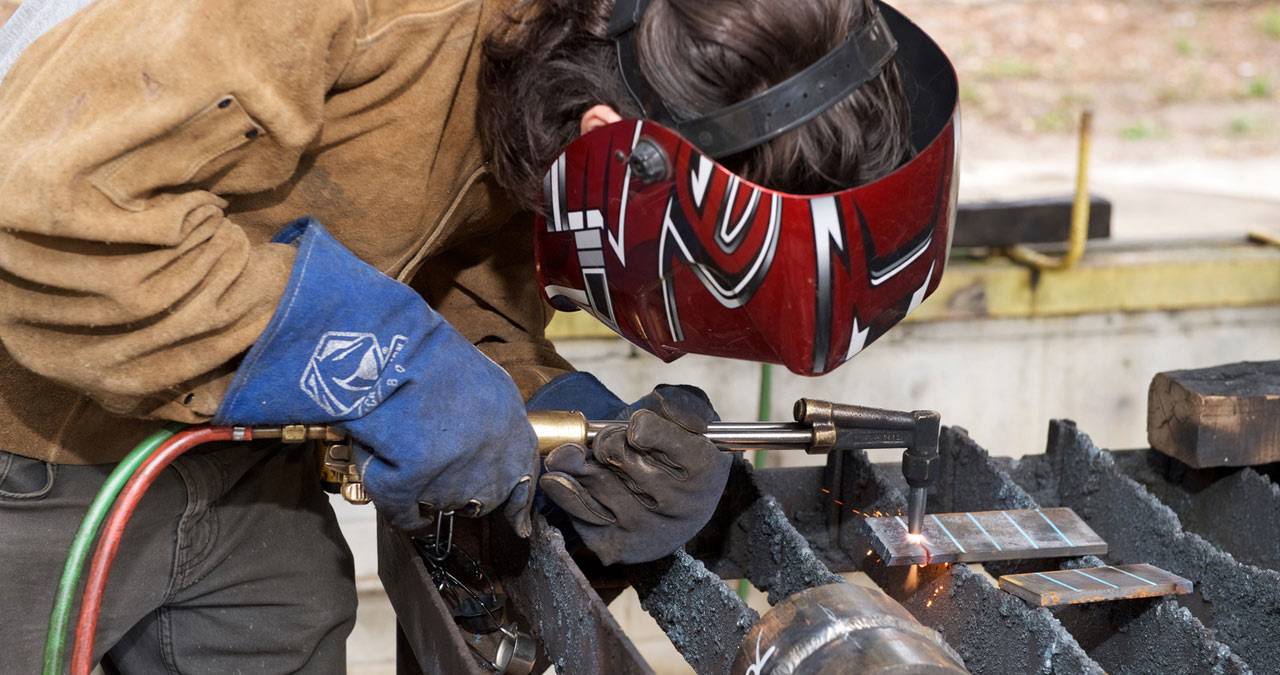Usual Welding Repair Issues and How to Address Them Properly
Welding fixings commonly encounter an array of problems that can endanger the stability of the last item. Typical troubles consist of poor penetration, porosity, and misalignment, to name a few. Each defect presents special difficulties that call for details techniques for resolution. Recognizing these problems is important for welders aiming to improve their results and abilities. This conversation will discover these typical welding repair work concerns and effective techniques to resolve them.
Insufficient Infiltration
Poor infiltration happens when the weld metal falls short to fully fuse with the base product, resulting in weak joints and potential structural failings. This issue typically comes from inadequate warm input, wrong electrode angle, or incorrect welding speed. Welders may run into insufficient infiltration because of a mistake of the required criteria for a details product density or type. Furthermore, contamination on the base product's surface area can hinder effective bonding, worsening the issue. To address inadequate infiltration, welders need to ensure proper settings on their equipment and keep a clean job surface. Regular evaluation of welds is recommended to identify any shortages early, enabling prompt corrections and the avoidance of jeopardized architectural integrity in welded settings up.
Porosity
Porosity is a typical problem in bonded joints that shows up as little gas bubbles entraped within the weld metal. This problem can compromise the stability of the weld, resulting in decreased strength and potential failure under tension. Fabrication. Porosity typically develops from contamination, moisture, or incorrect welding strategies, which allow gases to run away into the liquified weld pool. To resolve porosity, welders ought to guarantee appropriate surface preparation, maintain a clean working atmosphere, and utilize appropriate welding specifications. In addition, selecting the best filler material and shielding gas can minimize gas entrapment. Regular inspection and screening of welds can assist recognize porosity early, guaranteeing prompt restorative actions are taken, therefore maintaining the high quality and dependability of the bonded structure
Imbalance
Misalignment in welding can emerge from numerous aspects, including improper configuration and thermal development. Comprehending the origin creates is essential for reliable resolution. Several improvement techniques are readily available to realign parts and ensure architectural integrity.
Sources of Imbalance
Welding misalignment typically comes from a variety of underlying concerns that can compromise structural stability. One key cause is inappropriate fit-up of elements before welding, which can lead to spaces and irregular surface areas. Variations in thermal expansion during the welding procedure can also result in distortion, especially if the materials being joined have different coefficients of expansion. Additionally, inadequate clamping and fixturing might stop working to hold elements safely in position, resulting in movement during welding. Badly kept equipment, including welding equipments and tools, may introduce incongruities in the weld grain, more adding to imbalance. Driver error, stemming from insufficient training or experience, can additionally play a significant function in developing misaligned welds.

Adjustment Methods Readily Available
Attending to misalignment successfully needs a mix of corrective methods tailored to the particular concerns handy. One common approach is using fixtures or jigs to hold parts in the correct placement during welding, making sure constant alignment. Furthermore, pre-heating the materials can help lower distortion and boost fit-up. For substantial imbalance, mechanical adjustment methods, such as utilizing hydraulic jacks or clamps, can be used to correct the position prior to welding. Post-weld warmth treatment may likewise be needed to alleviate tensions brought on by misalignment. Careful evaluation and adjustment throughout the setup phase can protect against misalignment problems from ending up being considerable issues, advertising a smoother welding procedure and improving general architectural stability.
Distortion
Distortion is an usual difficulty in welding that can emerge from various aspects, consisting of irregular heating & cooling. Understanding the reasons for distortion is important for applying effective prevention methods. Resolving this problem not only boosts structural integrity but also boosts the total top quality of the weld.
Root causes of Distortion
When subjected to the extreme heat of welding, products usually undergo changes that can cause distortion. This sensation primarily emerges from thermal development and tightening throughout the welding process. As the weld location warms up, the material increases; upon cooling, it gets, which can produce internal stresses. Furthermore, irregular home heating across a work surface can exacerbate these stress and anxieties, causing warping or bending. The type of material additionally plays a substantial function; metals with varying thermal conductivity and coefficients of growth might respond in a different way, causing unforeseeable distortions. Moreover, poor joint layout and inadequate fixturing can add to misalignment throughout welding, boosting the chance of distortion. Understanding these causes is essential for effective welding repair and prevention strategies.
Avoidance Techniques
Efficient avoidance methods for distortion during welding concentrate on managing heat input and making certain proper joint style. Keeping a regular heat input helps to decrease thermal development and tightening, which can cause distortion. Utilizing techniques such as pre-heating the workpiece can additionally decrease the temperature level slope, advertising consistent home heating. Additionally, picking appropriate joint styles, such as T-joints or lap joints, can improve security and decrease stress focus. Applying appropriate fixturing to safeguard the workpieces in area better aids in keeping positioning throughout the welding procedure. Lastly, staggered welding series can distribute warm a lot more evenly, preventing localized distortion. By using these techniques, welders can greatly lower the chance of distortion and boost the overall high quality of their welds.
Splitting
Breaking is an usual issue run into in welding fixings, often resulting from different aspects such as inappropriate air conditioning prices, material choice, or insufficient joint prep work. The incident of splits can greatly jeopardize the stability of the weld, bring about potential failures throughout operation. To resolve this concern, welders should first examine the root creates, ensuring that materials work and suitably picked for the details application. Furthermore, regulating the air soldering copper wire conditioning price during the welding procedure is crucial; quick air conditioning can generate anxiety and result in breaking. Correct joint layout and prep work additionally contribute to lessening the risk. Executing these strategies can enhance weld quality and durability, eventually minimizing the probability of breaking in ended up weldments.

Insufficient Combination
A substantial problem in welding fixings is incomplete blend, which occurs when the weld metal does not adequately bond with the base material or previous weld passes - Montana Mobile Welding and Repair Fabrication. This flaw can cause weak points in the joint, potentially endangering the stability of the welded structure. Factors adding to incomplete fusion consist of inadequate heat input, improper welding strategy, and contamination of the surface areas being joined. To address this concern successfully, welders ought to guarantee appropriate pre-weld cleansing and surface prep work, as well as adjust their welding parameters to accomplish sufficient penetration and blend. Routine assessment during the welding process can additionally help recognize insufficient blend early, permitting timely rehabilitative actions to improve the general quality of the weld
Overheating
While welding repairs can improve architectural honesty, overheating provides a significant challenge that best site can lead to product destruction. Extreme warm during welding can change the mechanical buildings of metals, leading to reduced stamina, raised brittleness, and warping. This sensation is specifically critical in high-stress applications where structural integrity is extremely important. Determining getting too hot can entail aesthetic examinations for discoloration or distortion, as well as checking temperature level during the welding procedure. To mitigate the threats connected with overheating, welders need to use appropriate methods, such as controlling warm input, changing travel reference speed, and utilizing ideal filler materials. Additionally, carrying out pre- and post-weld warmth treatments can assist bring back material buildings and boost the general top quality of the repair service, ensuring long-lasting performance and safety and security.
Often Asked Questions
What Are the Common Indicators of a Welding Problem?

How Can I Examine My Welds for Quality?
To check welds for quality, one can make use of visual evaluations, ultrasonic screening, and radiographic approaches. Each technique assures structural integrity, recognizes defects, and validates adherence to specified criteria, eventually improving the integrity of the bonded joints.
What Security Safety Measures Should I Take While Welding?
When welding, one need to prioritize security by wearing appropriate personal protective tools, making sure correct air flow, protecting combustible materials away, keeping a clean office, and being conscious of surroundings to protect against mishaps and injuries.
Can I Fix a Weld Without Renovating the Entire Joint?
Repairing a weld without redesigning the whole joint is feasible, depending on the damages (Fabrication). Methods such as grinding, including filler product, or utilizing a welding process can efficiently deal with certain problems while preserving the surrounding structure
What Devices Are Crucial for Effective Welding Fixes?
Important devices for efficient welding repairs consist of a welding maker, wire brush, grinder, protective gear, clamps, and filler products. Each tool plays an important function in ensuring top quality and security throughout the repair procedure. Porosity usually develops from contamination, wetness, or inappropriate welding methods, which allow gases to get away into the molten weld pool. Inadequately maintained tools, consisting of welding equipments and devices, might introduce variances in the weld grain, more adding to misalignment. When subjected to the extreme heat of welding, materials typically undertake changes that can lead to distortion. Cracking is an usual issue come across in welding repairs, usually resulting from different elements such as incorrect cooling prices, product option, or inadequate joint prep work. A considerable issue in welding repair work is insufficient combination, which occurs when the weld metal does not sufficiently bond with the base material or previous weld passes.